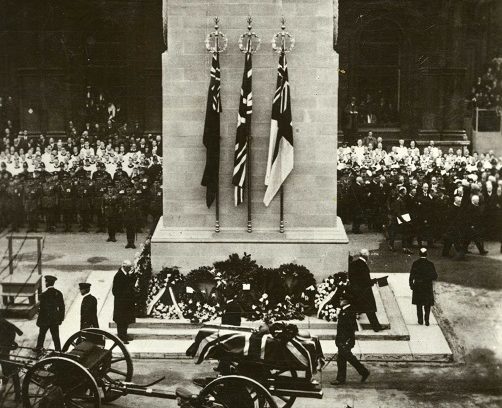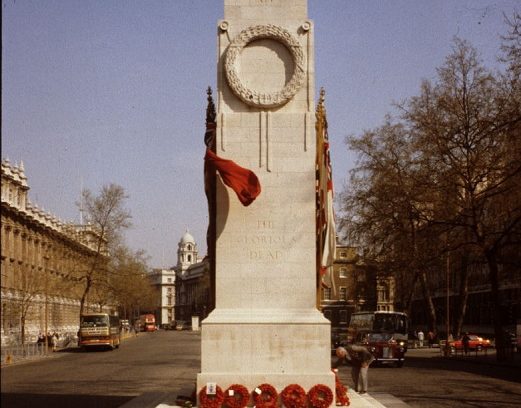100 Buildings 100 Years
1920: The Cenotaph, London
Status: Listed Grade I
Condition: Good condition
Type: Monument
Architect: Sir Edwin Lutyens
Location: Whitehall, London SW1
The Cenotaph is arguably the most important work of architecture erected in Britain in our period as it is a national shrine, the memorial to the dead of two world wars. It is also the work that brought England’s greatest twentieth century architect, Sir Edwin Lutyens, to wide public recognition. The history of its genesis is curious as, despite all the grand schemes for national memorials proposed during and after the Great War of 1914-18, this modest memorial began as a temporary structure of wood and plaster erected for the Peace Day celebrations of July 1919. Lutyens had been asked rapidly to design a “catafalque”, but he proposed instead a “cenotaph”, a memorial to someone buried elsewhere, and designed a sarcophagus supported by a tall pylon, subtly modelled with his characteristic alternate setbacks. This seemingly simple, elegant structure unexpectedly became the focus of grief for a nation in mourning for its war dead, so the demand arose that it be re-erected in stone, and the permanent Cenotaph was unveiled on Armistice Day 1920. And so well did it fulfil its melancholy function that all that was required after a second world war was to add two more dates.
by Gavin Stamp
click on photographs to see full size
Search 100 Buildings 100 Years
Look for buildings by entering the name of a building or architect or browsing the drop down list. Each entry gives the architect and location, and the icons show listing status. Where available, we have linked to detailed online information about the building, such as the Historic England listing description.







